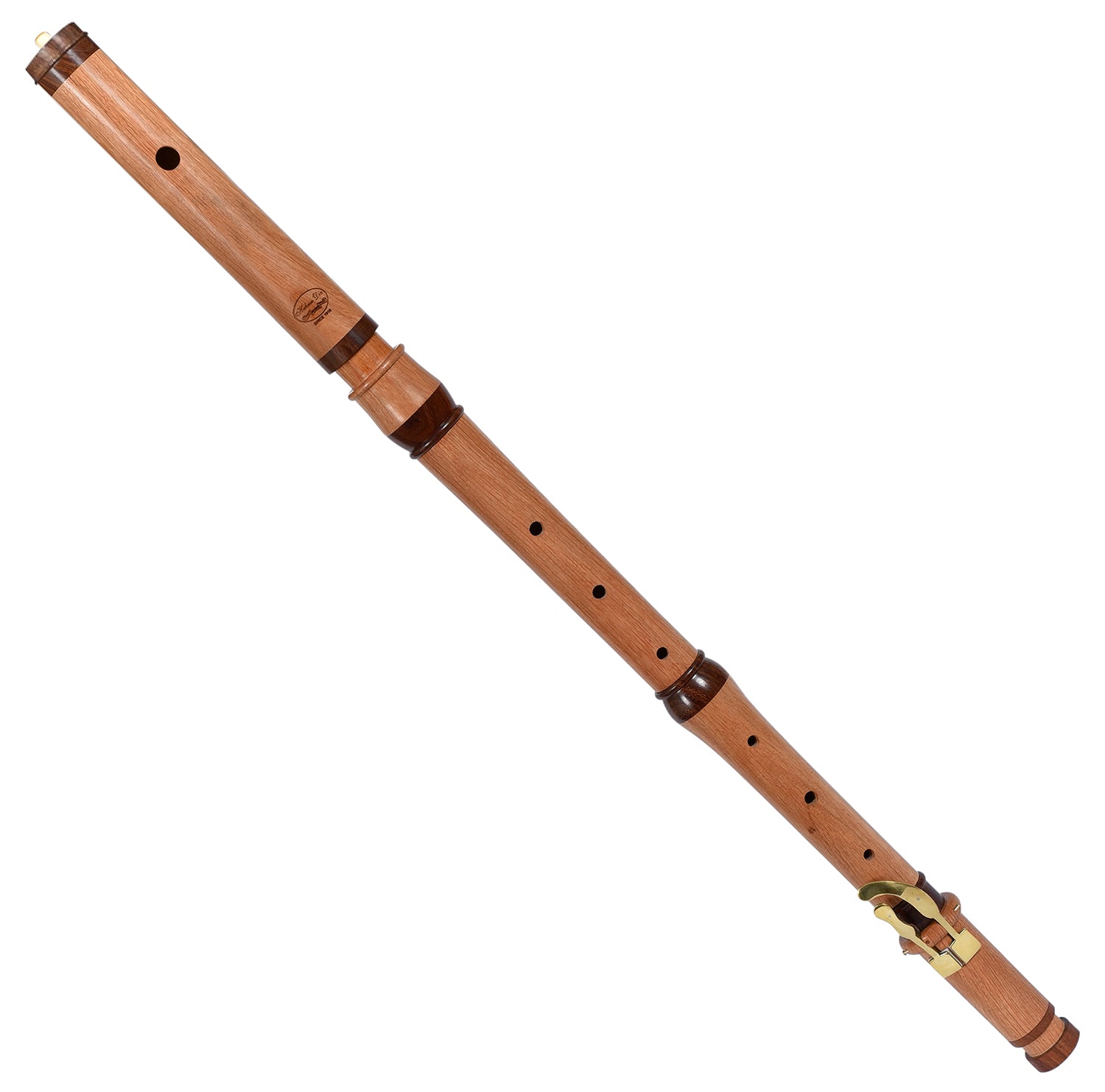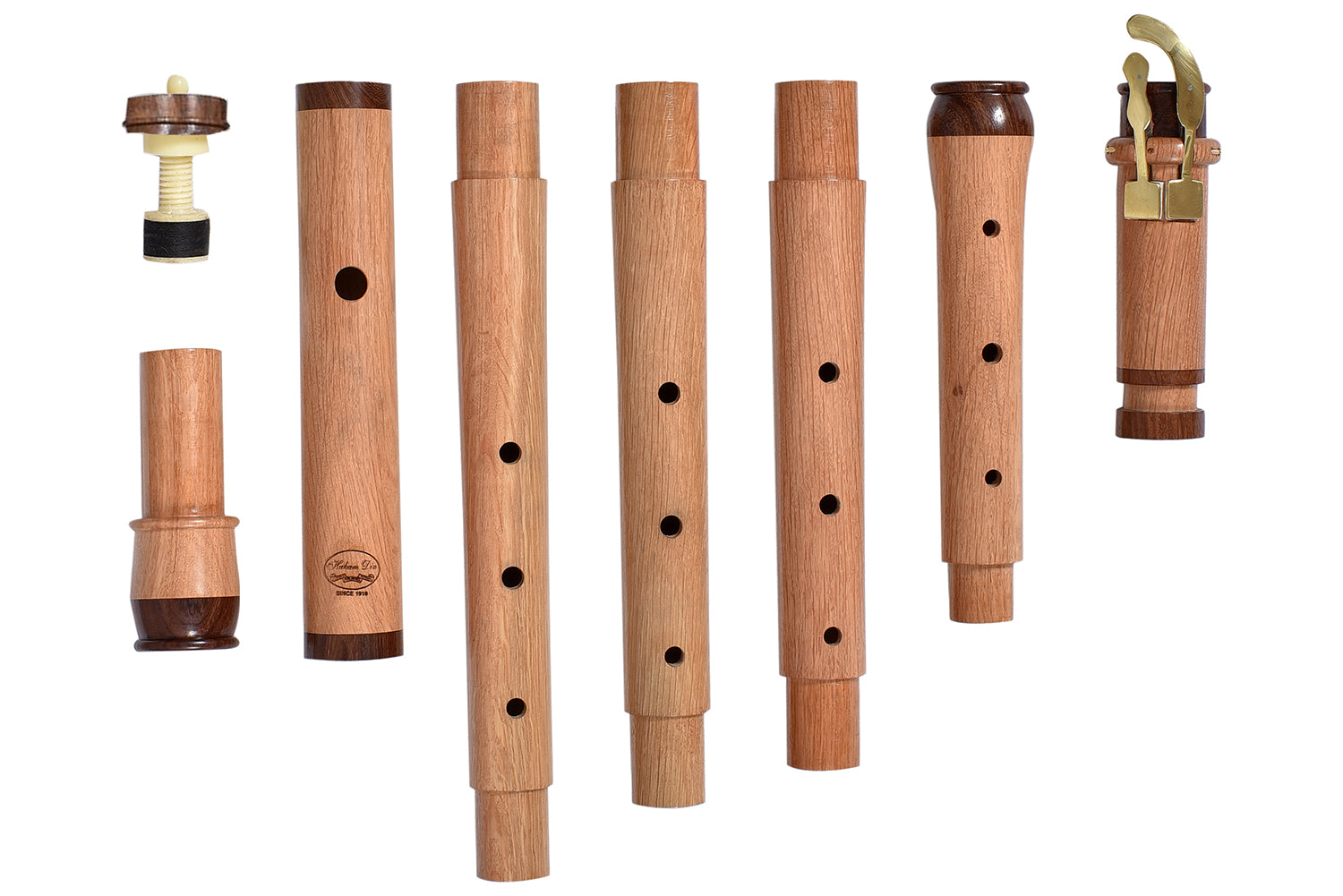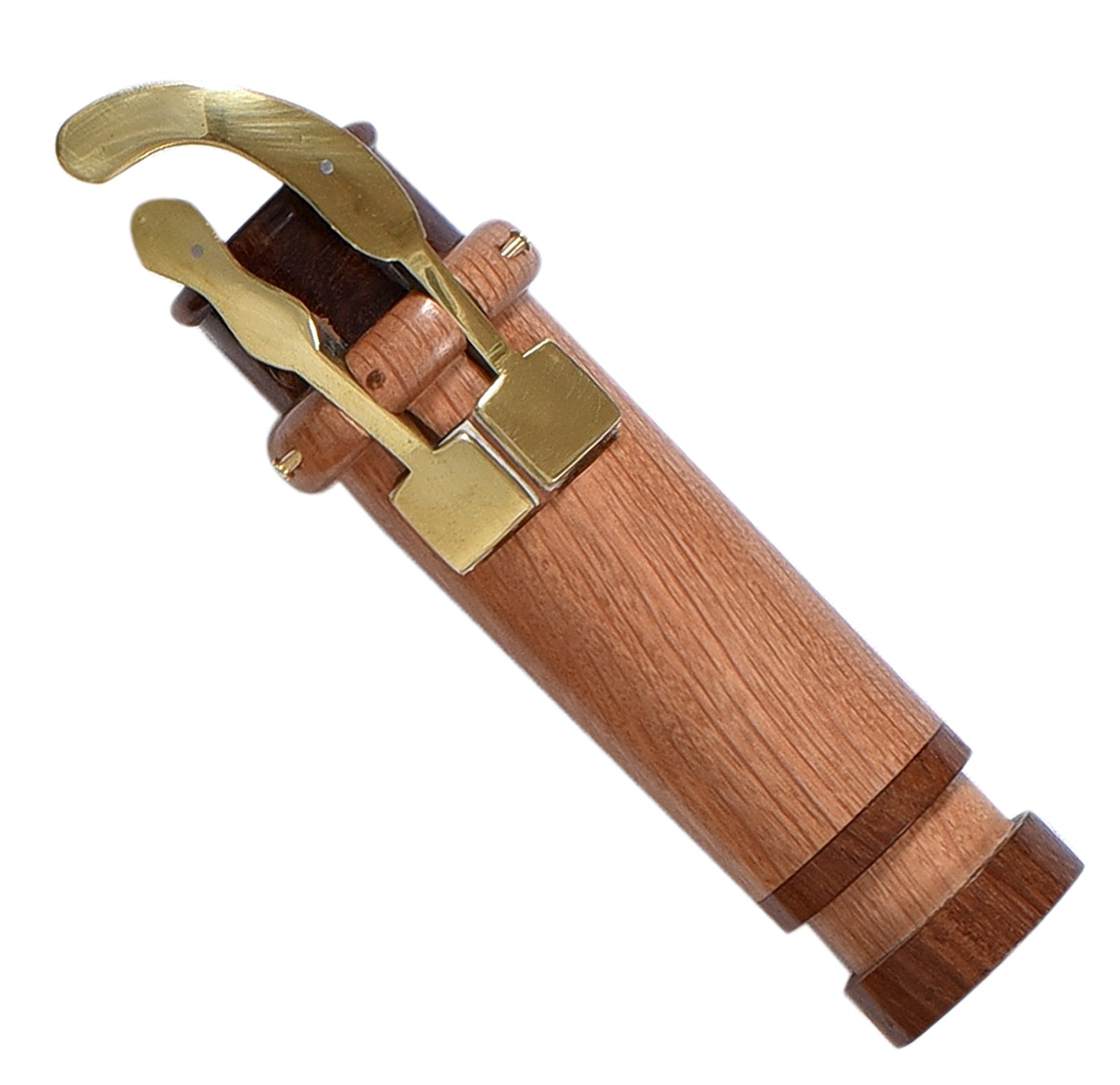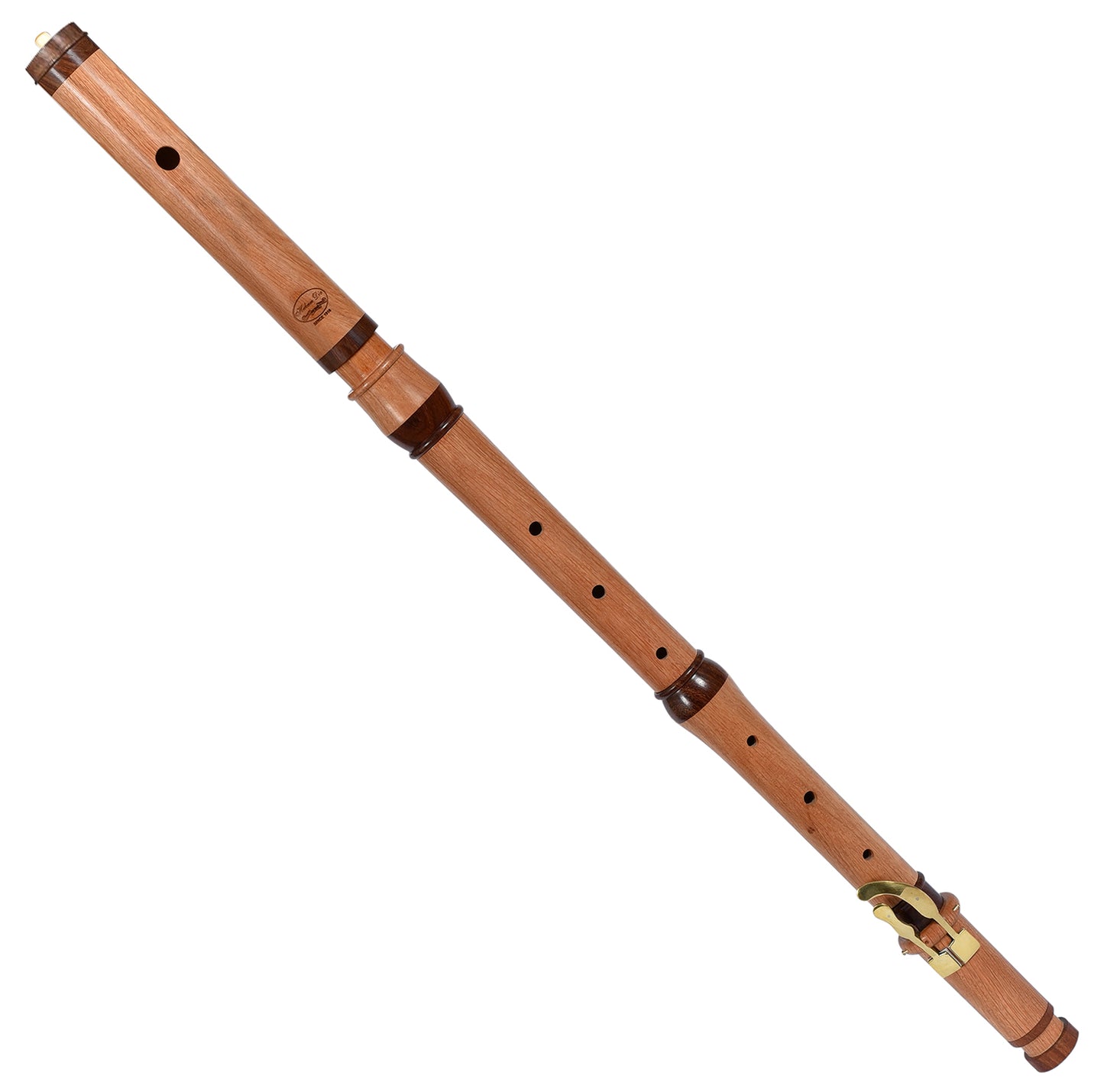
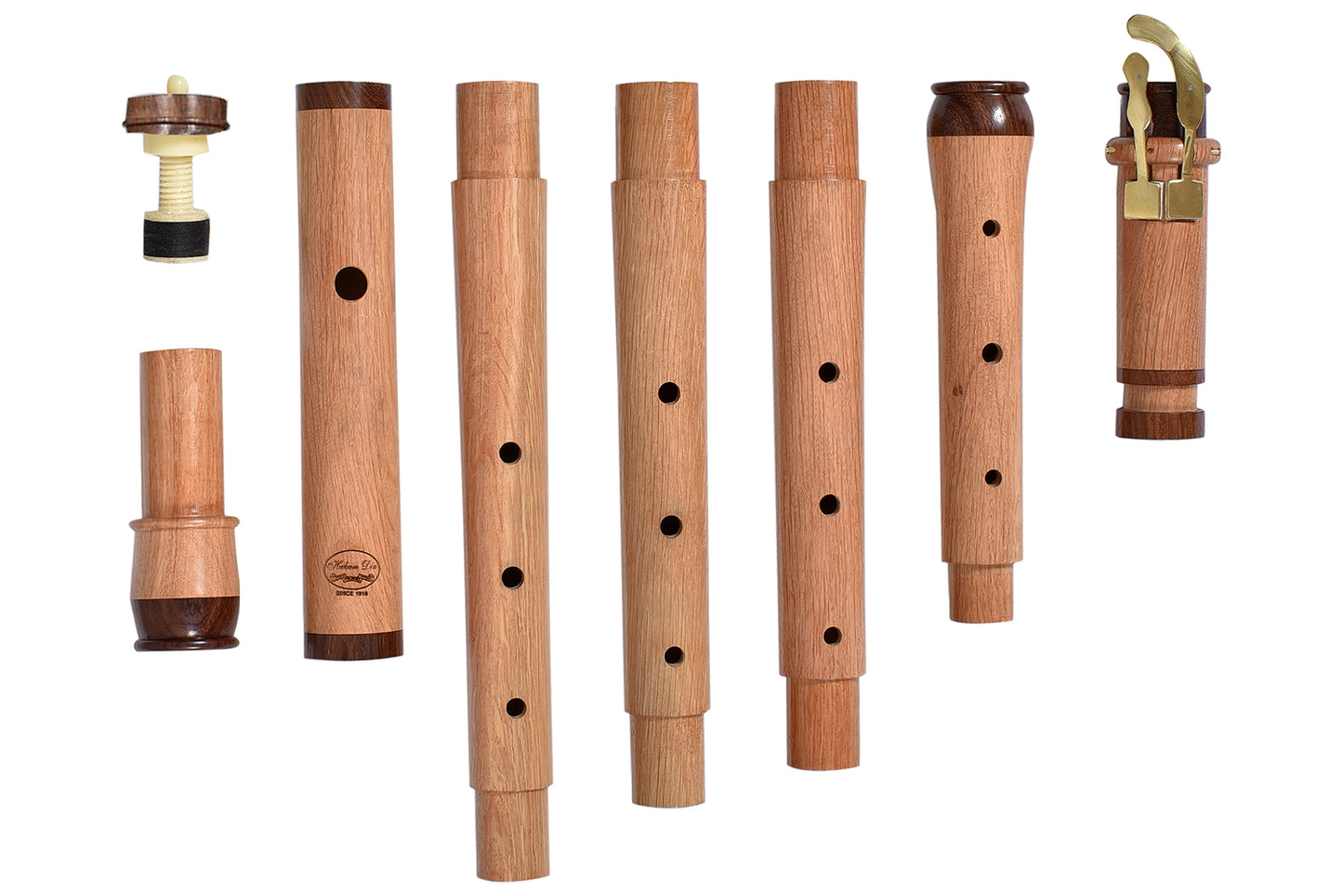
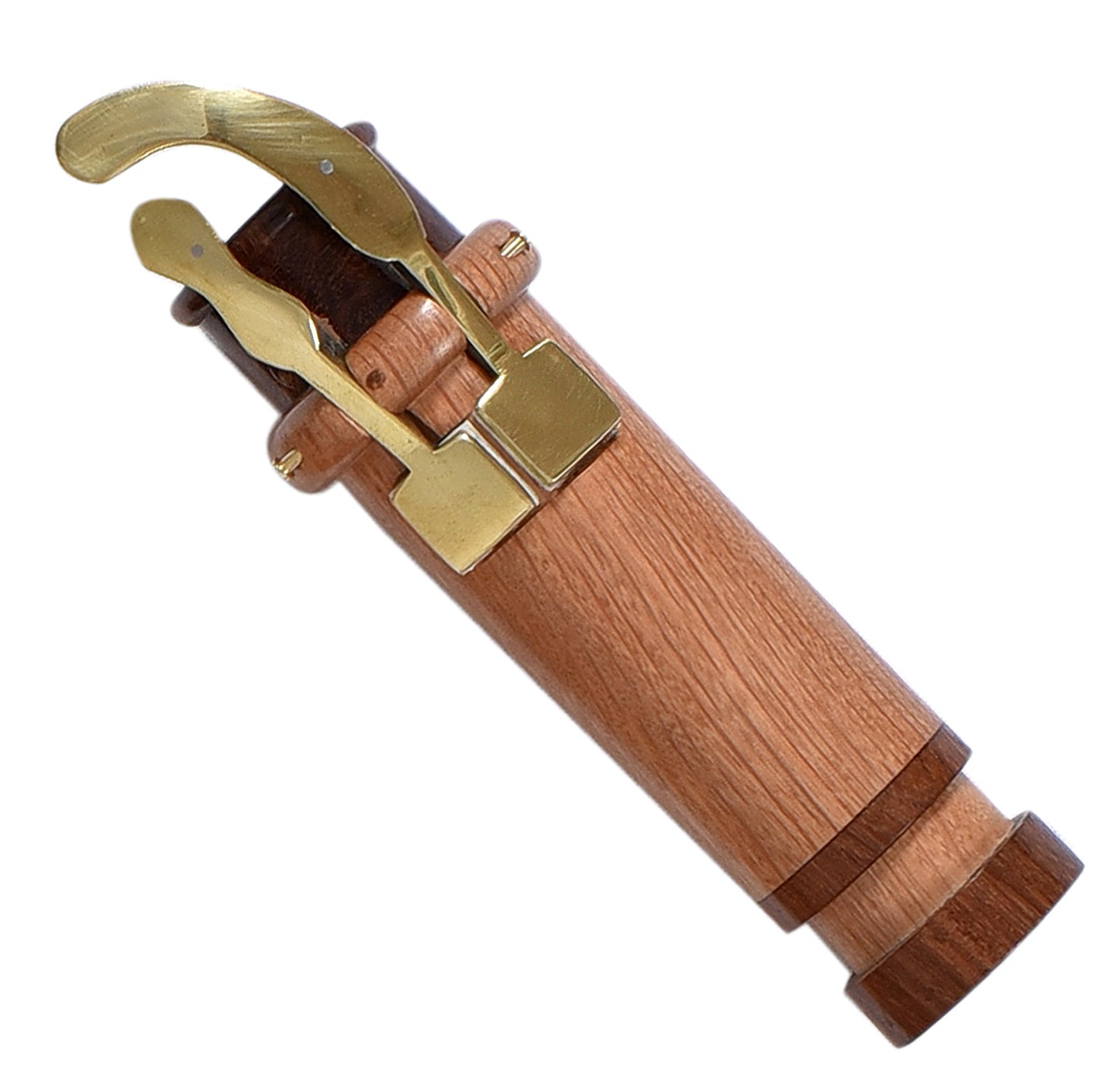
With all five corps de rechange (385, 392, 400, 415, and 430 Hz), the J.J. Quantz flute features a slide head-joint for precise pitch adjustment with any middle joint and a foot register for regulating the lowest note, D.
This flute is a reproduction of the original Johann Joachim Quantz (Dresden, 1697-1773).
- Select the pitch and wood when buying.
- Crafted from Olive wood.
- Wood-ends are protected by Cocobolo wood rings.
- Screwed stopper.
- Two keys: Casted from brass and features steel springs with the most suitable leather pads.
- Comes with care instructions, and a fingering chart.
- Additionally, accessories such as a plush-lined protective case, cleaning cloth, and extra key pads are provided.
Historical Pitch Choices for Authentic Performance:
- 385 Hz – Early Baroque: Central European 17th-century pitch, ideal for early Baroque repertoire and historically informed low-pitch ensembles.
- 392 Hz – French Baroque: Suited for French Baroque music and court repertoire, matching the traditional ton de chapelle pitch.
- 400 Hz – Transitional: Bridges French and High Baroque styles, convenient for mixed ensembles or modern players exploring both worlds.
- 415 Hz – Baroque: The standard Baroque pitch for most 18th-century European music, widely used by period instrument groups.
- 430 Hz – Classical: Perfect for late-18th-century Classical works and early Romantic repertoire preceding the modern 440 Hz standard.
Quantz’s Innovations in Flute Design:
- In 1739, Quantz embarked on groundbreaking research in the realm of flute-making, contributing to the evolution of the instrument's design and capabilities.
- Quantz's legacy includes the introduction of the tuning head-joint, often called the "slide head" or "swan neck." This innovative feature allowed flutists to finely adjust the flute's pitch by moving the head-joint, a breakthrough that significantly enhanced intonation across different keys and has persisted in modern flute design.
- Quantz's ingenuity extended to the addition of the Eb key on the foot. This pivotal inclusion facilitated effortless execution of the Eb note, elevating overall playability and enabling smoother transitions between notes. The Eb key remains a testament to Quantz's commitment to advancing flute technique.
The Legacy of Johann Joachim Quantz:
- Johann Joachim Quantz (1697–1773) was the best-known flute player of the 18th century. A prominent figure in the 18th century music scene. Quantz was renowned not only for his compositions and the influential book "On playing the Flute" (published in 1752), but also for his role as the esteemed flute instructor-teacher to Frederick the Great of Prussia starting from 1728.
- A Treatise on Traverso Flute Playing. This invaluable resource, published in 1752, offers insights into performance practice and flute technique from the 18th century. Its enduring value makes it relevant for enthusiasts and musicians seeking historical perspective.
- Of the eight complete flutes that survived are all from the collection of Frederick the Great.

